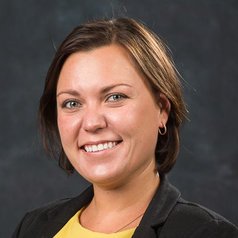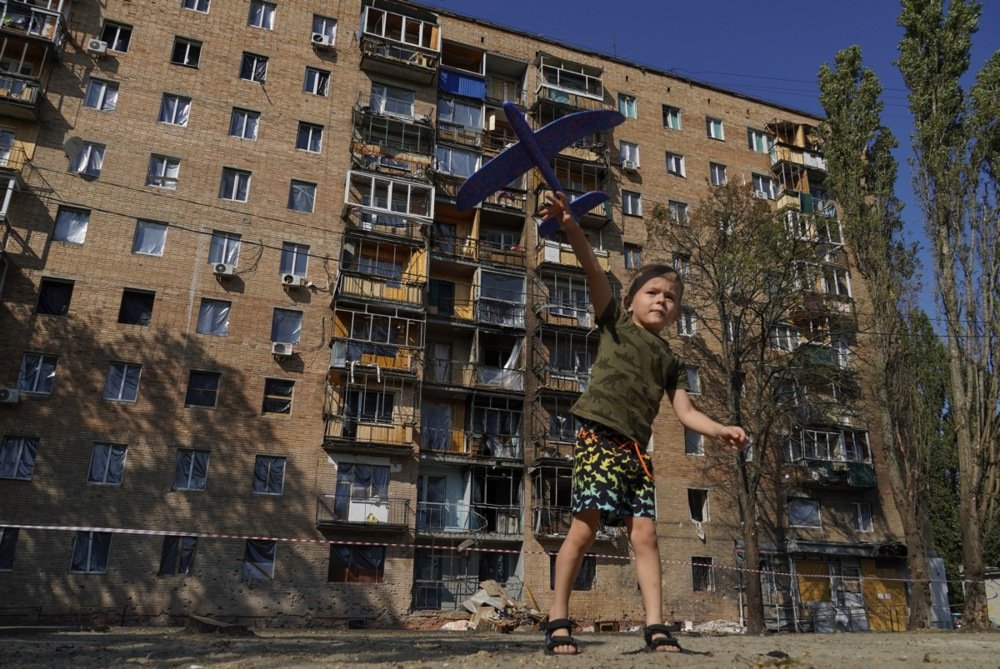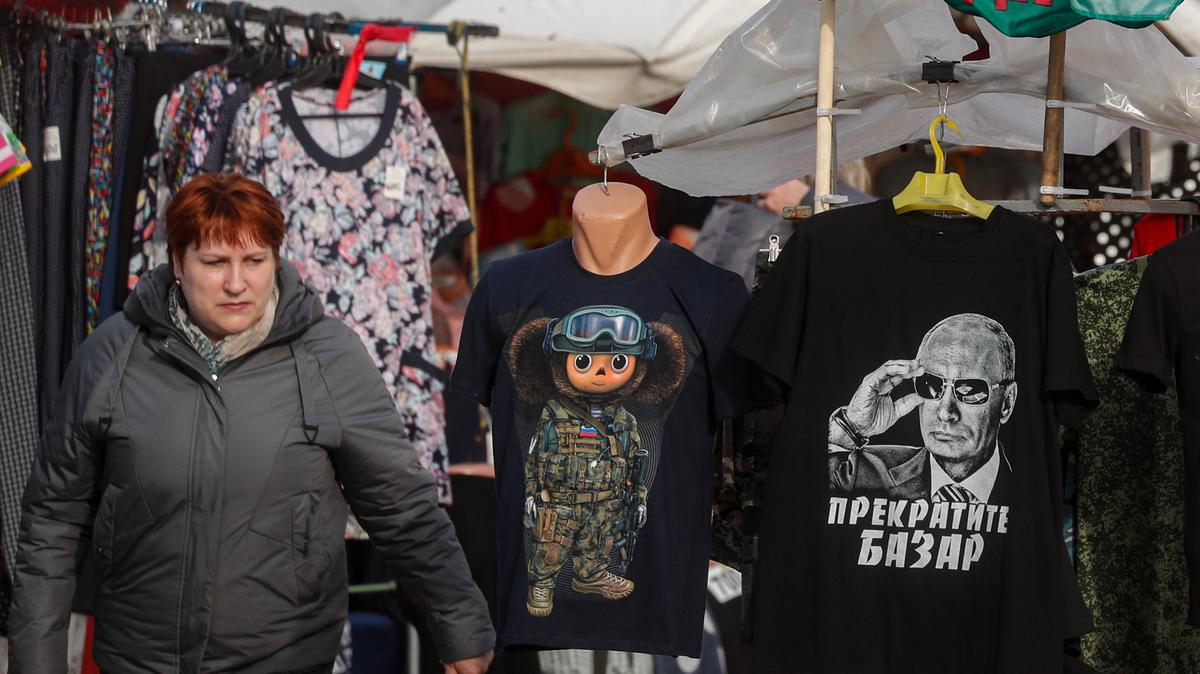In the quarter-century of Vladimir Putin’s rule — he has served as prime minister or president since August 1999 — the former KGB man has attempted to sell to the public the image of strongman, saviour and defender of the Russian people. Indeed, the war in Ukraine was presented as a humanitarian project to save ethnic Russians in Ukraine. Yet, the reality is rather different. Since the start of the war, Putin’s inability to protect the Russian population has been shown time and again.

Lena Surzhko Harned
associate teaching professor of political science at Penn State University
Numerous towns in Russia, including Moscow, have been subject to drone attacks. In June 2023, Wagner Group chief Yevgeny Prigozhin led a short-lived mutiny that saw rebel troops turn from Ukraine and march though Russian towns, causing casualties.
Perhaps most humiliating for Putin has been Ukraine’s speedy and sustained incursion into Russia’s Kursk region. Since 6 August 2024, Ukrainian forces have taken over 1,200 square kilometres of Russian territory, resulting in the evacuation or flight of over 100,000 Russians, some of whom reported feeling “left under fire” and frustrated by media downplaying the severity of the situation.
The Ukrainian advance is the most serious challenge to Putin’s narrative of the war since the invasion began. It also risks making the Russian leader look vulnerable and weak.
As a scholar of post-Soviet states, I see echoes of the past in Putin’s present. When confronted by crises, Putin has often struggled to respond to the needs of the Russian people decisively and quickly. Since President Boris Yeltsin appointed the then-unknown apparatchik as prime minister on 9 August 1999, Putin has seemed more preoccupied with the myth of the saviour than the actual saving of lives.
Ukraine’s rapid advance though the region in recent weeks — during which it captured dozens of settlements and Russian soldiers — has been a major blow to Moscow.
Kursk plays an important and complicated role for Putin and Russia. The Battle of Kursk in 1944 was a decisive Soviet victory in the “Great Patriotic War,” the term Russians use to refer to World War II. It is a potent symbol of the sacrifice and victory that has become part of Russia’s national identity under Putin.
As such, Ukraine’s rapid advance though the region in recent weeks — during which it captured dozens of settlements and Russian soldiers — has been a major blow to Moscow.
Russian media was quick to compare the invasion of Kursk with that of Nazi Germany, invoking the gravitas of the situation.
Yet Putin’s response has been slow and, to many observers, puzzling. After several days of silence and avoidance, a visibly upset Putin held a televised meeting with top security officials and regional governors, in which he promised a “worthy response” and payment of 10,000 rubles (€100) for residents displaced by the incursion. But there was no mass evacuation or clear guidance to the Kursk population until several days later.
While the incursion of Kursk was underway, Putin delegated responding to the “situation” to others and travelled to Azerbaijan for a meeting with President Ilham Aliyev and visited a horticultural farm.

Vladimir Putin talks to the widow and daughter of the commander of the ill-fated Kursk submarine, 22 August 2000. Photo: EPA / ITAR-TASS
Ukraine’s incursion into Kursk, and Putin’s response, has echoes of yet another earlier Kursk crisis: the 2000 sinking of the nuclear submarine that bears the region’s name. The Kursk sank during exercises in the Barents Sea after an explosion in the torpedo hatch on 12 August 2000 killed most of the 118-member crew.
Some 23 survivors of the initial blast barricaded themselves in a compartment of the sub, awaiting rescue. The explosions were picked up by European seismographs, and numerous countries offered their assistance for the rescue effort. However, Putin refused the foreign help until it was too late; Norwegian divers finally reached the submarine on 21 August to find all the crew members dead.
The Kursk disaster exposed what critics claimed was “political paralysis” at the Kremlin, with Putin — just a year into his tenure — criticised personally for his days-long silence about the disaster. He refused to interrupt his vacation in Sochi on the Black Sea, and on 18 August — six days into the crisis — opted to travel to Ukraine for an informal meeting with the heads of the Commonwealth of Independent States, hosted by the then-president of Ukraine, Leonid Kuchma.

A building damaged by Ukrainian airstrikes in the Russian city of Kursk, 18 August 2024. Photo: EPA-EFE / STRINGER
On 23 August 2000, a reluctant Putin met with families of the Kursk crew. Despite tight control on foreign media access, when the unpleasant exchanges between Putin and angry grieving mothers were shown on Russian TV, it was a disaster for Putin’s image.
According to a witness, Putin was enraged by the media portrayal of him, accusing Russian TV channels of hiring “10-dollar whores” to discredit him.
Disproportionate use of force, mishandling and corruption have been running themes in Russia’s responses to terrorist attacks.
Since Putin’s encounter with the victims’ families in 2000, Russia’s tightly controlled media has fallen much more in line with the Kremlin’s project of portraying Putin as the nation’s “protector”.
Leaning into this narrative, pro-Putin media often frame the Ukrainians in the current war as terrorists and Nazis.
But Putin’s handling of actual terrorist situations again highlights his failure to protect Russian lives.
Take his handling of the attack in Beslan, a city in North Ossetia, five years into his tenure. On 1 September 2004, a group of over 30 armed militants stormed a school and took over 1,000 hostages, including children, teachers and some family members.
The hostages were held in the gymnasium without food or water until 3 September, when Russian special forces entered the building. The siege ended in a chaotic battle in which hundreds of hostages were killed, including 186 children.
Survivors and relatives accused the Russian government, including Putin, of mishandling the situation and took the government to the European Court of Human Rights, where the court ruled in their favour, finding that the Russian government “failed to protect the hostages.”
Disproportionate use of force, mishandling and corruption have been running themes in Russia’s responses to terrorist attacks. During Putin’s quarter-century in charge, Russia has seen over a dozen terrorist attacks, the latest of which, an attack by affiliates of the Islamic State group at a Moscow concert in March, rivals Beslan in terms of death toll.
Putin visited Beslan on 20 August 2024 and attempted to link the current events in Kursk to the attack, saying that “enemies are again trying to destabilise the country.” What is common to both cases is how unable to protect Russians Putin turned out to be.
The Ukrainian incursion of Kursk, which has been a success so far, has put Putin’s image as a tough protector in serious danger — and not for the first time.
No doubt, Russian propaganda will do everything in its power to defend Putin’s mythos before a domestic audience. But never in his 25 years of being in power has this reputation appeared so vulnerable. Indeed, the only thing Putin appears capable of protecting these days is his own carefully crafted image.
This article was first published by The Conversation. Views expressed in opinion pieces do not necessarily reflect the position of Novaya Gazeta Europe.
Join us in rebuilding Novaya Gazeta Europe
The Russian government has banned independent media. We were forced to leave our country in order to keep doing our job, telling our readers about what is going on Russia, Ukraine and Europe.
We will continue fighting against warfare and dictatorship. We believe that freedom of speech is the most efficient antidote against tyranny. Support us financially to help us fight for peace and freedom.
By clicking the Support button, you agree to the processing of your personal data.
To cancel a regular donation, please write to [email protected]

